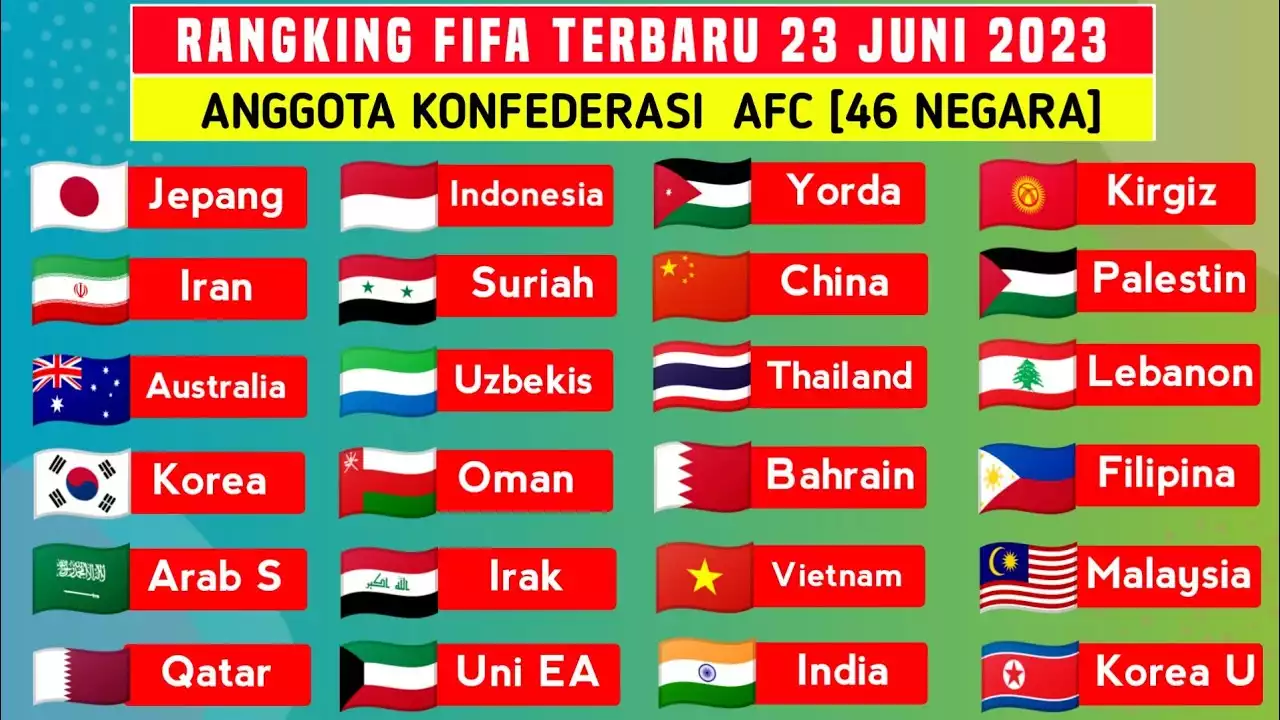Evolution of AFC Asian Cup qualification slots
Historical overview of qualification slots
When the AFC Asian Cup was first established in 1956, the qualification process was much simpler compared to the present day. In the early years, only a handful of teams were eligible to compete in the tournament. The qualification slots were limited to a select number of countries, usually the strongest teams in the region.
However, as the tournament gained more recognition and participation increased, the Asian Football Confederation (AFC) realized the need to expand the qualification slots. This was done to give more teams a chance to showcase their talent on the international stage.
Factors influencing the increase in qualification slots
The increase in qualification slots can be attributed to several factors. One of the main reasons is the growing popularity of football in Asia. With more countries investing in their national football programs and infrastructure, the talent pool has expanded significantly. This has led to an increase in the number of competitive teams vying for a spot in the AFC Asian Cup.
Another factor that has influenced the increase in qualification slots is the AFC's desire to promote football development across the entire continent. By providing more opportunities for teams to qualify for the tournament, the AFC aims to foster growth and competition at all levels. This not only benefits the participating teams but also helps raise the overall standard of football in Asia.
Impact of the increase in qualification slots
The increase in qualification slots has had a profound impact on the AFC Asian Cup. It has allowed more countries to participate in the tournament, giving them a chance to gain valuable experience and exposure on the international stage. This has helped raise the profile of Asian football and has led to increased interest and support from fans around the world.
Furthermore, the increase in qualification slots has also made the tournament more competitive. With more teams vying for a limited number of spots, the qualification process has become tougher than ever. Teams now have to work harder and showcase their skills consistently to secure a place in the tournament. This has resulted in higher quality matches and more intense rivalries, making the AFC Asian Cup even more exciting for fans.
Challenges faced in managing the increased qualification slots
While the increase in qualification slots has undoubtedly been beneficial for Asian football, it has also presented some challenges for the AFC. One of the main challenges is the logistical aspect of managing a larger number of teams participating in the qualification process. The AFC has had to ensure that the qualification matches are organized efficiently and that the teams have the necessary support and resources to compete.
Another challenge is maintaining the integrity of the qualification process. With more teams vying for a limited number of spots, there is a higher risk of match-fixing and other unethical practices. The AFC has implemented strict regulations and measures to prevent such incidents and ensure fair competition.
Success stories of teams benefiting from the increased qualification slots
The increase in qualification slots has provided numerous opportunities for teams to make their mark on the AFC Asian Cup. One notable success story is the rise of teams from emerging football nations. Countries that were previously considered underdogs have now been able to qualify for the tournament and even make it to the later stages.
Teams like Qatar and Iran have shown remarkable progress in recent years, thanks in part to the increased qualification slots. They have not only qualified for the AFC Asian Cup multiple times but have also achieved impressive results, including reaching the final and winning the tournament.
Future prospects for AFC Asian Cup qualification slots
Looking ahead, the future of AFC Asian Cup qualification slots looks promising. With the continued growth of football in Asia, it is likely that the number of qualification slots will increase further. This will provide even more opportunities for teams to participate and showcase their talent on the international stage.
Additionally, the AFC is exploring ways to make the qualification process more inclusive and diverse. There are discussions about introducing new regional competitions that would give teams from smaller nations a better chance of qualifying for the AFC Asian Cup. This would further enhance the growth and development of football across the continent.
AFC Asian Cup qualification slot allocation process
The allocation of qualification slots for the AFC Asian Cup is a carefully managed process. The AFC uses a combination of factors to determine the number of slots allocated to each participating country. These factors include the country's performance in previous tournaments, the strength of their domestic football league, and their overall football development programs.
The significance of the growth in AFC Asian Cup qualification slots
The growth in AFC Asian Cup qualification slots signifies the increasing importance and recognition of Asian football on the global stage. It reflects the progress made by football nations in Asia and their commitment to developing the sport. The increased opportunities for teams to qualify for the tournament have not only elevated the standard of Asian football but have also helped foster unity and camaraderie among nations.
The growth of AFC Asian Cup qualification slots from a few select spots to a much larger number has had a profound impact on the tournament. It has allowed more teams to participate, increased competition, and provided new opportunities for emerging football nations. With the continued growth of football in Asia, the future of AFC Asian Cup qualification slots looks bright, promising even more exciting and competitive tournaments in the years to come.










